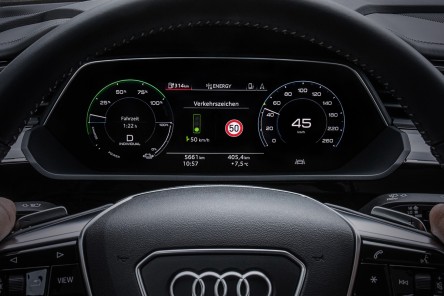As central driver his department is also responsible for innovation management at PSW and from the start Pedro learned to think laterally. ‘For many years I worked in series development and had to first switch over my synapses to activate my creative potential.’ Today I really know that good ideas do not arise out of routine.
Pedro Oliveiras’s job means to be that one step ahead of others. And even if it sounds like a paradox, he and his team take more time than others to achieve exactly this.
Innovation emerges with interaction
‘We need freedom to manoeuvre in the way we work’. The appropriate methods such as design, thinking, agile working and working out loud are needed together with time and space. For whoever uses methods like these, it is important to let many brilliant minds participate so that things can only get better together. Since innovations do not arise in quiet chambers. At PSW there are mostly three to five colleagues from different disciplines for creative work. For instance, people from the trial, from project management and advance development. These mixed teams work free from classic structures and first concentrate wholly on the development of new projects, which still have no specific relation to vehicles.
Contact to innovation hubs and visionaries
‘We see ourselves as initiators of new technologies and offer a platform to discuss fresh ideas and concepts. At the start it only concerns the newness of the idea. In the second step we consider how and where a good idea can be used and how we can improve the products of our customers’, explains Pedro. Above all today it means generating sustainable ideas which go beyond the classic automobile. The ideas are free. Only the heading serves as a guideline: How does the mobility of the future look? And during the search for answers PSW innovators exchange ideas with innovation hubs, visionaries and start ups who are concerned with urban infrastructures.

Ideas for the last miles
Fact is: Mobility is moving from ownership to sharing models. Or in other words: People will own far less vehicles in future, but will drive around with one or several vehicles. The question is: How does a clever means of locomotion function, let’s say in 2030? ‘We will mix buses, scooters and e-bikes seamlessly. The means of locomotion in future is inter-modal. Autonomous driving belongs to this mixture. On the one hand we are working on new functions for driver experience such as innovations for the vehicle interior and appropriate applications for this. In addition, we are concerned with innovative concepts which should keep continuous mobility in towns more sustainable’, explains Pedro. ‘For instance we are currently developing an urban mobility concept with revolutionary ideas. But currently I cannot reveal any more about that.’
Omega One

The megatrend "urbanization" has a major impact on tomorrow's mobility...

In the course of this topic, an urban last mile concept was developed at PSW during an internship as part of a diverse mobility offer...

The basic idea: The expensive components, such as the battery and drive, should be modular, removable and transferable to other mobility concepts.

